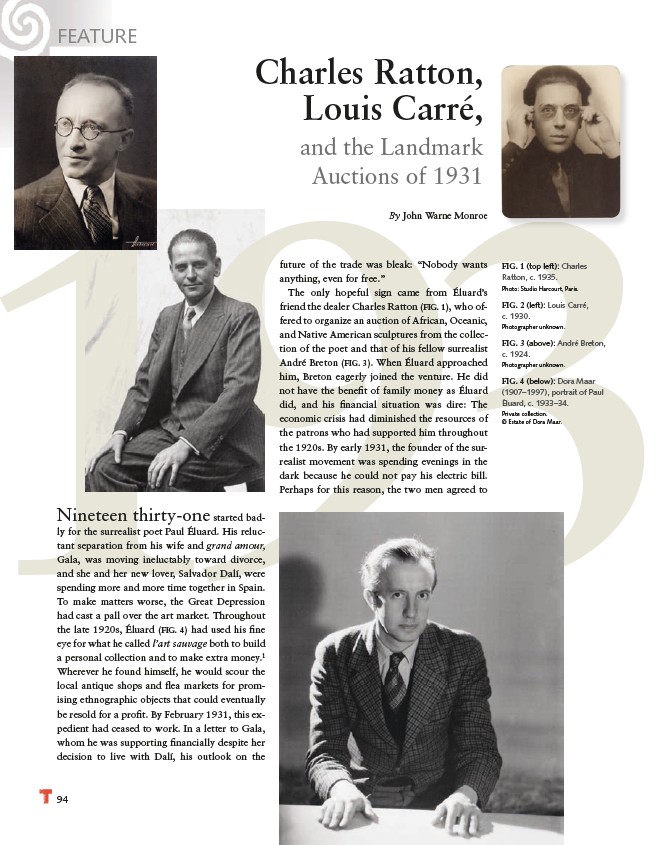
Charles Ratton,
Louis Carré,
and the Landmark
Auctions of 1931
1931
94
FIG. 1 (top left): Charles
Ratton, c. 1935.
Photo: Studio Harcourt, Paris.
FIG. 2 (left): Louis Carré,
c. 1930.
Photographer unknown.
FIG. 3 (above): André Breton,
c. 1924.
Photographer unknown.
FIG. 4 (below): Dora Maar
(1907–1997), portrait of Paul
Éluard, c. 1933–34.
Private collection.
© Estate of Dora Maar.
Nineteen thirty-one started badly
for the surrealist poet Paul Éluard. His reluctant
separation from his wife and grand amour,
Gala, was moving ineluctably toward divorce,
and she and her new lover, Salvador Dalí, were
spending more and more time together in Spain.
To make matters worse, the Great Depression
had cast a pall over the art market. Throughout
the late 1920s, Éluard (FIG. 4) had used his fi ne
eye for what he called l’art sauvage both to build
a personal collection and to make extra money.1
Wherever he found himself, he would scour the
local antique shops and fl ea markets for promising
ethnographic objects that could eventually
be resold for a profi t. By February 1931, this expedient
had ceased to work. In a letter to Gala,
whom he was supporting fi nancially despite her
decision to live with Dalí, his outlook on the
By John Warne Monroe
future of the trade was bleak: “Nobody wants
anything, even for free.”
The only hopeful sign came from Éluard’s
friend the dealer Charles Ratton (FIG. 1), who offered
to organize an auction of African, Oceanic,
and Native American sculptures from the collection
of the poet and that of his fellow surrealist
André Breton (FIG. 3). When Éluard approached
him, Breton eagerly joined the venture. He did
not have the benefi t of family money as Éluard
did, and his fi nancial situation was dire: The
economic crisis had diminished the resources of
the patrons who had supported him throughout
the 1920s. By early 1931, the founder of the surrealist
movement was spending evenings in the
dark because he could not pay his electric bill.
Perhaps for this reason, the two men agreed to
FEATURE